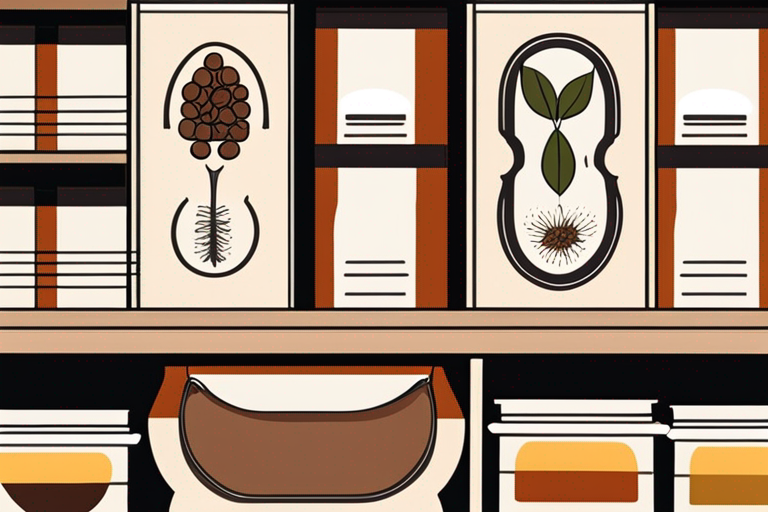
Extending the Shelf Life of Allspice: Tips for Proper Storage and Preservation
Get Your Free Food Safety Cheat Sheet
30 most common foods with instant answers. Print it and stick it on your fridge—completely free!
Extending the Shelf Life of Allspice: Tips for Proper Storage and Preservation
Allspice is a versatile spice that adds warmth and depth to a variety of dishes. Whether you use it in baking, cooking, or even in pickling, allspice can enhance the flavor profile of your favorite recipes. To ensure that your allspice stays fresh and potent for as long as possible, proper storage and preservation techniques are essential. In this comprehensive guide, we will explore practical tips on how to extend the shelf life of allspice effectively.
Understanding Allspice
Before delving into storage methods, it's essential to understand what allspice is and how it differs from other spices. Allspice is derived from the dried berries of the Pimenta dioica tree, which is native to Central and South America. Despite its name, allspice is not a blend of different spices but rather a single spice with a flavor profile reminiscent of a combination of cinnamon, nutmeg, and cloves.
Benefits of Allspice
- Rich in antioxidants
- Contains anti-inflammatory properties
- May aid digestion
Factors Affecting Allspice Shelf Life
Several factors can impact the shelf life of allspice, including:
Exposure to Light and Heat
- Allspice should be stored away from direct sunlight and heat sources to prevent flavor degradation.
Humidity Levels
- High humidity can cause allspice to clump and lose its potency. It is crucial to store it in a dry environment.
Proper Packaging
- Allspice should be stored in airtight containers to protect it from moisture and air exposure, which can lead to flavor loss.
Tips for Storing Allspice
To maximize the shelf life of your allspice and maintain its flavor and aroma, follow these storage tips:
-
Choose the Right Container: Opt for airtight containers such as glass jars or metal tins to protect allspice from air and moisture.
-
Avoid Light Exposure: Store allspice in a cool, dark place, such as a pantry or cupboard, away from sunlight.
-
Maintain Consistent Temperature: Keep the storage area at a stable temperature to prevent fluctuations that can affect the quality of the spice.
-
Label and Date: Properly label the container with the date of purchase to track its freshness.
Proper Handling and Usage
In addition to proper storage, how you handle and use allspice can also impact its shelf life:
Grinding Allspice
- For optimal flavor, consider grinding whole allspice berries as needed rather than purchasing pre-ground allspice.
Avoiding Contamination
- Use clean, dry utensils when scooping out allspice to prevent introducing moisture or contaminants into the container.
Sealing Properly
- After each use, ensure that the container is tightly sealed to prevent air and moisture from compromising the spice.
Signs of Spoiled Allspice
Despite your best efforts to store allspice properly, it is essential to be able to recognize signs of spoilage:
- Loss of Aroma: Spoiled allspice will have a diminished aroma or may smell musty.
- Change in Color: Allspice that has gone bad may appear discolored or have dark spots.
- Clumping: Moisture exposure can cause allspice to clump together, indicating spoilage.
Conclusion
By understanding the factors that affect the shelf life of allspice and implementing proper storage techniques, you can ensure that this flavorful spice remains fresh and potent for an extended period. Remember to store allspice in a cool, dark, and dry environment, use airtight containers, and avoid exposure to light and heat. By following these guidelines, you can enjoy the full flavor and aroma of allspice in your culinary creations for months to come.

Authoritative Food Safety References
These agencies and university labs inform every tip and health precaution we publish.
USDA FoodKeeper – Cold Storage Guidelines
Official refrigerator, freezer, and pantry timelines maintained by the U.S. Department of Agriculture.
Visit USDA FoodKeeperFDA Produce Safety Rule & Grower Guidance
Field-to-fridge handling practices that prevent contamination of fruits, vegetables, and leafy greens.
Visit FDA Produce SafetyCDC Foodborne Illness Prevention Hub
Surveillance-backed guidance on pathogens, symptoms, and steps to reduce foodborne illness risk.
Visit CDC Food SafetyUC Davis Postharvest Technology Center
University research detailing optimal storage atmospheres for produce after harvest.
Visit UC Davis PostharvestPenn State Extension – Home Food Preservation & Safety
Peer-reviewed extension bulletins on safe canning, chilling, and reheating practices.
Visit Penn State ExtensionCan I freeze allspice to make it last longer?
How do I know if my allspice has gone bad?
Can I use expired allspice?
Are there any natural ways to preserve allspice?
Get Your Free Food Safety Cheat Sheet
30 most common foods with instant answers. Print it and stick it on your fridge—completely free! Want more? Upgrade to the complete guide with 70+ foods.
Scan your food directly and get instant safety info using our AI-powered camera feature.